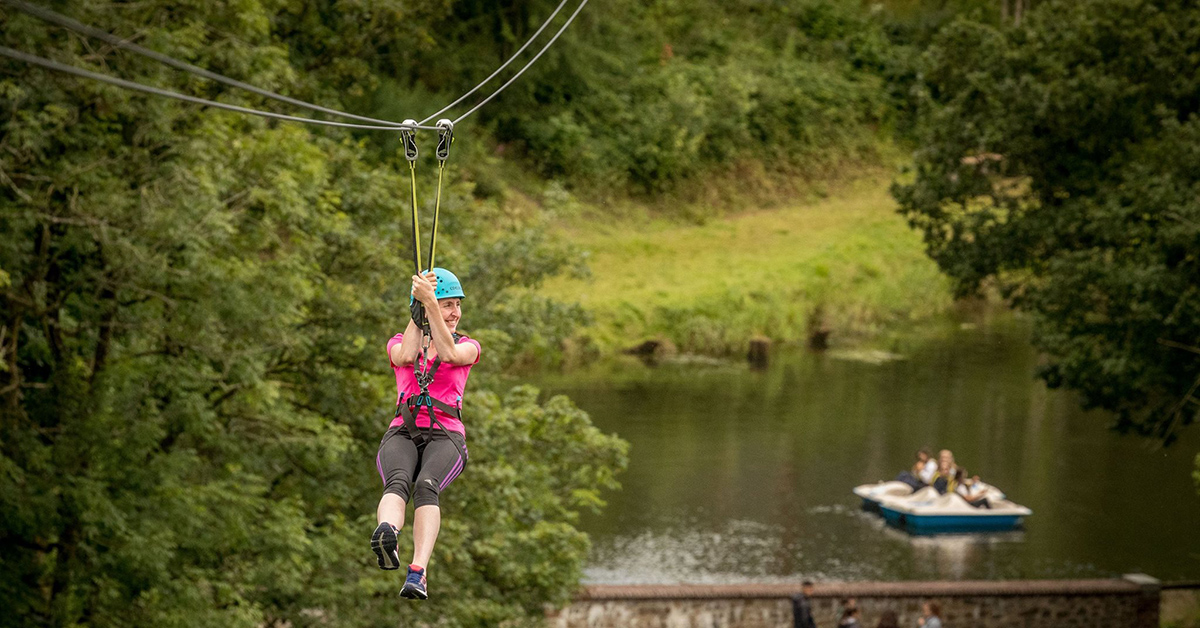
The goal of this white paper is to identify and eradicate the nine most common zip line problems. These variables must be addressed from an operational approach since eliminating them will considerably reduce participation risk.
You’ll see a significant increase in throughput, rider happiness, and profitability as a result of correcting these mistakes—or preventing them in the first place. It’s no secret that a single incident involving a customer on your zip line might put you out of business. You can’t afford to put participants in danger, but thousands of zip line operators do just that every day.
Your first aim should be to reduce risk, followed by improving rider experience and generating profitability. A zip line operation’s profitability is determined by a number of criteria, including regional demand, infrastructure that can satisfy projected demand, customer satisfaction, high throughput, and safety. You’ll also need a fun and engaging installation and setting to keep clients coming back, encourage them to bring their friends, and establish a favorable reputation for your company. While most of these components are required for a profitable zip line enterprise, one might argue that the highest return on investment is just operating a safe operation.
This white paper discusses zip lines that use impact braking to decelerate riders at the zip line’s terminal end. When the rider trolley collides with a brake device at high speeds, impact braking occurs. The braking system is what brings the rider to a stop in impact braking.
Any zip line with a top speed of above 25 mph is classified as a high-speed zip line (40 kph). Automatic braking, an emergency arrest device (EAD), and a designed landing area are all required on high-speed lines. The following is a list of the most common zip line mistakes that you may not be aware of, as well as how to avoid or eliminate them.
MISTAKE #1: OPERATING WITHOUT AN EMERGENCY ARREST DEVICE
ACCT Standards for Challenge Courses and Canopy/ Zip Line Tours require high-speed zip lines to have both a primary and an emergency or backup braking mechanism to ensure riders are stopped safely, effectively, and reliably at the end of the line. An emergency arrest device (EAD) does exactly what it says on the tin: it is the device that stops a rider in an emergency if the primary brake fails.
According to the ACCT Standard, an EAD is required as a backup braking system for all zip lines where a participant arrives at the landing area at speeds more than 6 mph (10 kph) and may come into unplanned and/or hazardous contact with terrain, objects, or persons in the landing area. The participant must not have to do anything to engage the device, and it must either be fully distinct from the primary brake or be an integrated backup function of a primary brake.
An EAD’s objective is to prevent serious injury or death as a result of user error or equipment failure. The following are some examples of primary braking system failure:
- Operator error, such as failure to belay
- Connecting line fatigue
- Knot failure
- Rope cut at impact
- Broken lines
- Equipment failure
- Failure to reset a brake block or trolley
- Improper installation
Accidents do sometimes happen and the consequences can be unthinkable. Beyond the threat of serious injury or death to a participant, the ramifications of an accident— especially without a proper EAD—could literally cost you your entire business.
Solution:
Install an emergency arrest device on every zip line. The specific primary braking and EAD options you choose will depend on your zip line construction, speeds, location, length, budget, motivations/goals, and intended rider experience. Refer to ACCT Standards for appropriate EAD options for your zip line.
A spring pad, such as the one pictured above, is an EAD device approved by the ACCT. Always consult an engineer for installation guidelines.
Most braking systems can be used as either a primary or backup brake, but must be installed as separate, stand-alone systems. Spring packs may be a viable EAD option for zipSTOP and other braking systems, so long as they are installed and operated correctly. Although pads aren’t an ACCT-approved EAD, it’s always a good idea to keep terminal posts and line connections protected and/or padded as an extra precautionary measure. Please consult us to determine the best EAD option for your particular operation.
-
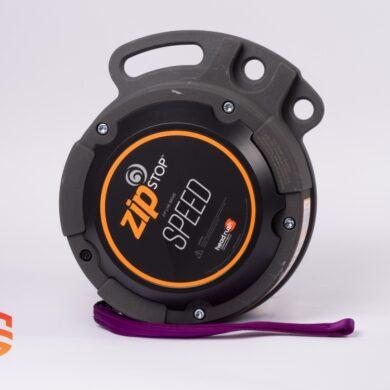 zipSTOP SPEED Zipline Brake | 50 – 72 kph€ 6.099,00 – € 6.349,00 Ex VAT
zipSTOP SPEED Zipline Brake | 50 – 72 kph€ 6.099,00 – € 6.349,00 Ex VAT -
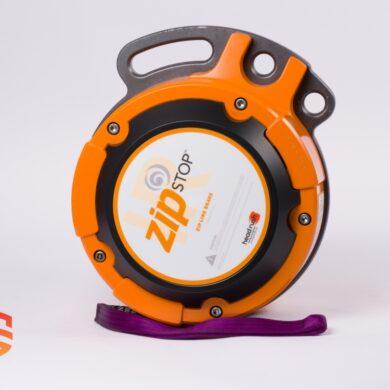 zipSTOP IR Zipline Brake | 24 – 60 kph€ 5.649,00 – € 5.799,00 Ex VAT
zipSTOP IR Zipline Brake | 24 – 60 kph€ 5.649,00 – € 5.799,00 Ex VAT -
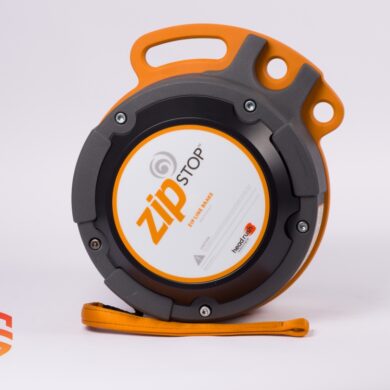 zipSTOP Zipline Brake | 0 – 36 kph€ 5.249,00 – € 5.499,00 Ex VAT
zipSTOP Zipline Brake | 0 – 36 kph€ 5.249,00 – € 5.499,00 Ex VAT
MISTAKE #2: OPERATING WITHOUT A RIDER-ORIENTATION CONSTRAINT
Riders are stopped more suddenly by EADs than by primary braking devices. They are not only inconvenient for riders, but they can also be dangerous for riders approaching the braking zone in any direction other than forward. A rider-orientation constraint is basically a mechanism or technology that keeps riders on the zip line facing forward at all times. Riders must enter the braking area looking forward, or facing the landing area, to reduce risk and liability in your zip line operation.
Arriving backward can put a rider’s head in danger of colliding with the zip line since high-speed arrivals induce upswing when they hit the brake trolley. During braking-induced rider swing, zip line brake systems are designed to keep a rider’s head as far away from the collision surfaces as possible, such as the zip line wire. Even if they were facing forward at the time of brake initiation, a non-constrained rider, or a person dangling beneath a trolley without something physically maintaining them in a forward-facing position, will inevitably tilt rearward during swing initiation. This rotation is caused by the rider’s head being in close proximity to the zip line due to the unequal anatomical distribution of weight as it pertains to the trolley lanyard, which might cause damage.
The risks of not utilizing a rider-orientation constraint include lost income due to a poor customer experience, legal ramifications, financial implications, and participant injury or death.
Solution:
On zip lines with an arrival speed of 25 mph (40 kph) or above, install rider trolleys that restrict rider orientation. Passive means, such as a trolley with a built-in chair that maintains riders facing forward without the need for rider input, are an option. The new Head Rush Technologies Impact Trolley with rotating handlebar is a more active option, since it is expressly designed to keep riders face forward and out of reach of the zip line cable and impact regions.
The T-handle on the Impact Trolley, unlike other handlebar attachments for other rider trolleys, may pivot and follow the rider’s motions organically during contact with the braking trolley. With other handlebars, which are frequently fixed and inflexible, a rider’s speed can cause the handlebar to lift the trolley off the cable upon collision, putting the rider’s head right in the impact zone. This results in line damage, faster wear on the rider trolley, increased deceleration and upswing, and customer discomfort.
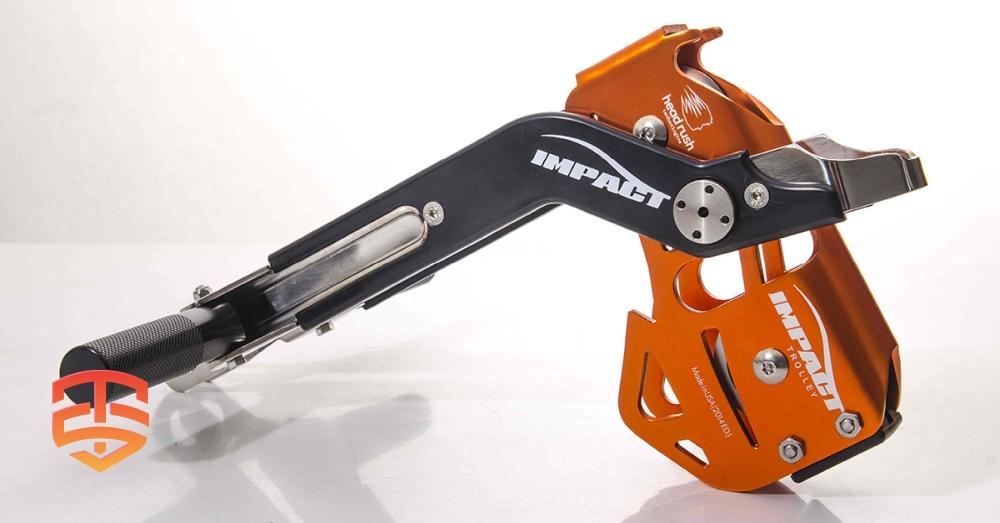
The Impact Trolley with pivoting handlebar is specially engineered to keep riders facing forward and out of reach of the zip line cable and impact areas.
As we will discuss shortly, while hand braking does constrain the rider to a forward-facing orientation, is not an adequate solution for braking high-speed zip lines.
MISTAKE #3: INCREASING RISK OF BODILY INJURY TO PARTICIPANTS
A rider should never be able to place their hands or body parts into the impact region when impact braking on a high-speed zip line, whether belayed or automated. Catching body parts in the impact zone might result in significant injury or even death.
In a zip line braking scenario, we frequently conceive of only one impact zone: the area between the rider trolley and the brake trolley/block at the time of impact. To start the braking process, these components collide with significant force. Another region of frequent impact, which is often overlooked, is behind the trolley, where a face, head, or other body part can crash with the rider trolley. Allowing an object or a body part to enter the impact zone has a negative impact on braking performance and is extremely dangerous.
Enabling riders to enter the braking area in any orientation other than forward and allowing them to be close enough to get their hands or other body parts in the impact area produces an extremely risky situation. Loss of fingers or hands, broken jaws, head trauma, serious scratches, or worse are all possible injuries from these mistakes.
Allowing participants to enter the braking area backwards is extremely dangerous. Loss of fingers or hands, broken jaws, brain trauma, severe scratches, and, in severe circumstances, death are all possible casualties.
Hand braking is one of the most underappreciated and deadly culprits. While many zip lines require riders to slow down with a gloved hand as they approach the landing location, this practice increases additional liability and danger because participants are now within reach of both the cable and the impact region. To be close enough to touch the cable for hand braking, a rider must also be close enough to the brake trolley, impact area, and maybe additional hardware. Although there is no legislated speed restriction for hand braking in the zip line industry, industry agreement is that at a certain speed, hand braking becomes a severe risk and liability.
Solution:
Critically assess and test your operation and determine where, specifically, participants are at risk for bodily injury on your zip lines. Even if an accident seems unlikely, you are responsible for mitigating risk and controlling your liabilities by considering the worst-case scenarios. Some of the most important safety features you can incorporate are:
- Putting distance between the rider and zip line
- Eliminating the possibility that a rider could reach out and touch the impact area
- Employing a rider trolley that ensures front-facing orientation at impact
- Removing hand-braking from the scenario
- Implementing an automated braking system
These measures will eliminate many types of common injuries including burns from hand braking and splinters from wire rope lacerations. It will also prevent the incidence of fingers being rolled over by trolleys.
MISTAKE #4: REQUIRING A STAFF MEMBER TO MANUALLY ENGAGE THE BRAKING SYSTEM
The ideal braking system delegates braking control to the brake itself, i.e., the operation is automated. An automated braking system is the most effective and least error-prone technique to stop zip line riders at the end of your course. While automatic brake devices will not completely remove the need for personnel, they will greatly lower the risk of human error. Staff must catch each participant when they make contact with the brake block in some braking systems, such as impact belay brakes. Your operators will be solely responsible for safely braking riders as a result of this. If a rider misses the belay by accident, they will have no way of stopping themselves and will be jolted and probably hurt by the EAD. The combination of human belayers and a zip line without an EAD is a disaster waiting to happen. Are you ready to take the chance that your employees will consistently remember to reset the brake and administer the braking system?
Solution:
By implementing an automated braking system, your staff can be focused on disembarking riders, rather than ensuring each rider brakes safely. Having a system that automatically resets the brake trolley and prepares for the next rider significantly increases participant throughput, with the added benefit that each rider’s braking experience is a pleasant one. At the end of the day, the participants who will want to return and zip again are those who’ve had a positive experience the previous time around. Automated braking systems can pay for themselves in a very short time and may just be one of the most overlooked strategies for ensuring a profitable and low-risk zip line operation.
The most effective and least error-prone way to arrest zip line riders at the end of your course is to employ a braking system with automatic reset, like the zipSTOP Zip Line Brake depicted above.
-
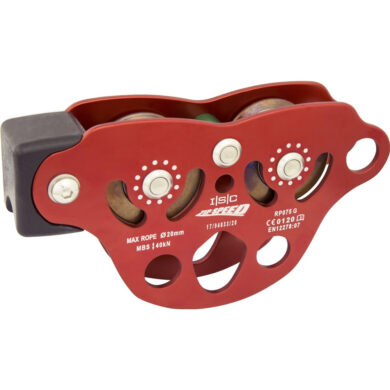 ISC Zipspeed-S Trolley€ 183,00 – € 271,00 Ex VAT
ISC Zipspeed-S Trolley€ 183,00 – € 271,00 Ex VAT -
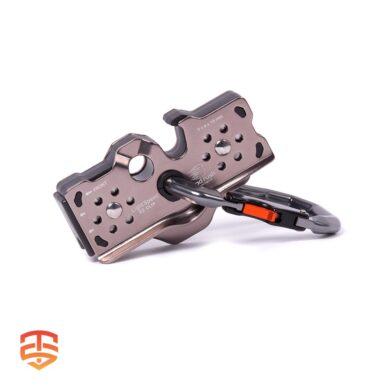 LightSpeed EZ Clip Trolley€ 204,00 – € 225,00 Ex VAT
LightSpeed EZ Clip Trolley€ 204,00 – € 225,00 Ex VAT -
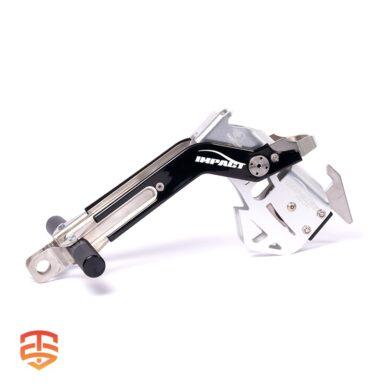 LightSpeed Impact Zip Line Trolley€ 199,00 – € 389,00 Ex VAT
LightSpeed Impact Zip Line Trolley€ 199,00 – € 389,00 Ex VAT
MISTAKE #5: FAILING TO ASSESS BRAKING SYSTEM OPERATION BETWEEN RIDERS
Even with the most advanced braking systems, operators must check between riders to assure proper operation. Riders and workers could be seriously injured if the system isn’t checked and flaws aren’t fixed.
What happens if a rider is still on the line when the next one takes off? A collision between the two motorcyclists is likely in this situation. Even if the first rider disembarks successfully, the following rider could approach the landing area without a braking mechanism if the brake does not reset in time. This scenario is just another convincing reason why zip line courses require EADs.
Even with the most advanced braking systems, operators must check between riders to assure proper operation. A twisted reduction line could have a significant impact on the brake system’s capacity to function, potentially resulting in serious injury to the rider.
Solution:
This is an operational issue easily solved by dedicated staff training and standard operating procedures. Staff must be aware that these protocols are required—not optional—and if not followed, may cause serious accidents and significant financial and legal implications.
Even with reliable braking systems, proper training and procedures are imperative to mitigate risk and liability. It takes very little time for staff to assess the braking system between riders, but not doing it could put your zip line operation out of business.
Staff training must include:
- Checking that the rider is properly disembarked before sending the next person
- Ensuring that the brake correctly resets between riders
- Looking to be sure no lines or hardware are out of place or tangled in the braking system
- Checking that the impact area is clear of all ropes or debris
- Developing and enforcing use of an effective system of communicating with fellow operators so they know when it’s safe to send the next person or when they need to wait until a problem is addressed.
MISTAKE #6: FAILING TO PERFORM REGULAR INSPECTIONS OF LINES, EQUIPMENT, AND HARDWARE
All braking systems require regular checks as part of their operational regimen. Depending on your braking system and operating conditions, daily, weekly, bimonthly, and/or annual inspections may be necessary. The equipment becomes dangerous to operate if all inspections and recertifications are not completed.
Self-inspections of braking systems typically contain the following components:
- Check ropes and other textiles (like brake lines or webbing) for signs of wear and fatigue and replace as recommended or necessary.
- Inspect all hardware and unit components, like the brake device, brake trolley, and pulleys, for signs of wear, damage, or debris.
- Ensure carabiners and quick links are closed and oriented properly.
- Ensure wire rope clips are properly torqued.
Failure to keep your braking system operating optimally will increase your risk for rider injury, equipment damage, and poor participant experience.
Solution:
Your staff must meticulously perform all inspections of lines, equipment, and hardware. Keep inspection records on file as proof of following the expected protocol. Ensure all staff and operators are trained to complete these inspections and understand the potential consequences of not following the inspection procedures. If utilizing an automated braking system, consult your operator manual for more information on required inspections.
Routinely inspect lines, equipment, and hardware. The equipment pictured above would need to be removed from operation immediately and replaced.
MISTAKE #7: FAILING TO ACKNOWLEDGE AND UNDERSTAND WHAT’S INHIBITING YOUR BRAKING
This is perhaps the most common mistake seen in zip line operations. There are many external factors that can impact the performance of your brake system, resulting in unsafe and uncomfortable braking for your riders:
- Using a brake trolley that is not designed specifically for impact braking
- Using incorrect ropes or lines (e.g., wrong diameter, strength, materials, etc.)
- Using incorrect hardware, like improper pulleys
Using a brake trolley not designed specifically for impact braking can cause an unsafe or unexpected increase in braking force.
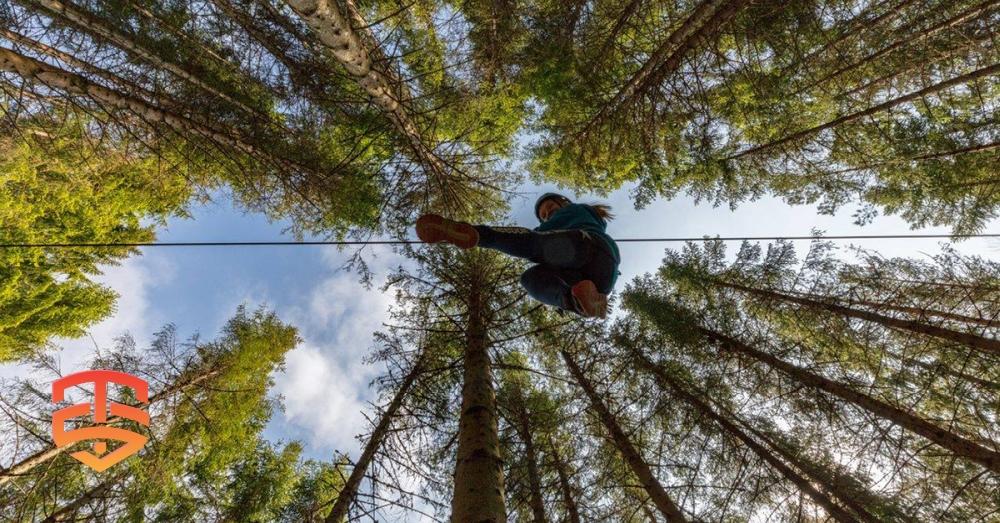
Excess friction delivered to your line by elements that are not visible to the naked eye is the leading cause of unexpectedly painful braking. This friction can result from any of the conditions listed above, and it might cause expected rider speeds to slow down. This could indicate that your engineering is no longer precise, resulting in a poor zip line brake installation. Excess friction causes havoc on zip lines, although most people are unaware of the problem. It is frequently to blame for leaving riders stuck and necessitating rescues, forcing riders to fall short of the landing area, or causing rider trolleys to hit the brake at considerably higher speeds than planned.
Increased braking force isn’t as dangerous as some of the other issues, but it has a significant influence on the rider experience and operational throughputs. When a rider’s ride is finished, you want him to feel compelled to try it again and bring friends and family along the following time. Excessive friction-induced braking has the potential to impact whether or not participants wish to zip again. A poor customer experience is bad for business and can hurt your reputation.
Solution:
You must grasp the fundamental mechanics of how each component of your zip line affects and impacts the others… even the things you can’t see… to ensure that your zip line is operating at peak performance. Using a high-speed camera, our engineering team did thorough testing. Only then were we able to see all of the complexities we had suspected were at work. Many zip line operators are unaware that they are speeding up or slowing down their lines. It’s critical to think about your zip line’s setup, engineering, and braking mechanism, as well as where additional friction might be formed. We recommend that you start by examining your hardware and accessory goods to ensure that they are compatible with your zip line and braking system’s design and performance parameters. Please refer to the operator manual for more information if you’re utilizing an autonomous braking system.
Eliminating the elements that affect your zip line’s braking force and cause unwanted friction on your line can increase the reliability, consistency, and efficacy of your braking system significantly. Because there will be fewer rider recovery scenarios, less wait time, and a gradual, comfortable deceleration rather than an abrupt halt, riders will appreciate the line much more. Operators will also benefit from increased throughput, less time required each tour, and a better reputation, all of which will result in higher revenues.
MISTAKE #8: ALLOWING DIMINISHED CUSTOMER EXPERIENCE
Whether customers have a positive experience at your operation depends on a number of variables:
- Do they feel safe?
- Is the experience comfortable?
- Does the operation run smoothly and quickly?
- Are your staff friendly and accommodating?
A rescue may be necessary if a rider becomes stranded in the middle of a line. This procedure slows throughput and lowers client satisfaction, resulting in a poor customer experience and a lower likelihood of repeat business.
Operators should put a premium on rider safety and satisfaction. If not done correctly, impact braking can be uncomfortable and even frightening, not to mention dangerous. It can also cause a slew of additional issues, such as falling short of the landing platform. Riders will be dissatisfied if they had to be rescued because they didn’t make it to the platform, crashed with another participant, or had to pull themselves hand-over-hand to the landing platform. Even those who are behind a cyclist who needs to be recovered have their experience harmed by having to wait for their turn. Simply ensuring that all riders arrive comfortably at the landing platform is maybe one of the most important things you can do to improve customer experience and increase word of mouth and return visits.
Solution:
To enhance customer experience, you need to implement strategies and protocols to maximize rider safety and focus on their enjoyment in all operational decisions. One solution to maximize customer experience is to minimize the problems stated above with the help of a qualified engineer. Rider recovery can be eliminated entirely, but it will take some work and investment. First, you must understand all the contributing factors, including:
- Too much belly, or sag, in your zip line
- Zip line trolleys that jam on the zip line with impact braking
- Too much friction or resistance in a braking system
- Improper setup of pulleys, lines, and braking systems
- Inability to stop participants from rolling backwards on the line after contacting the brake trolley
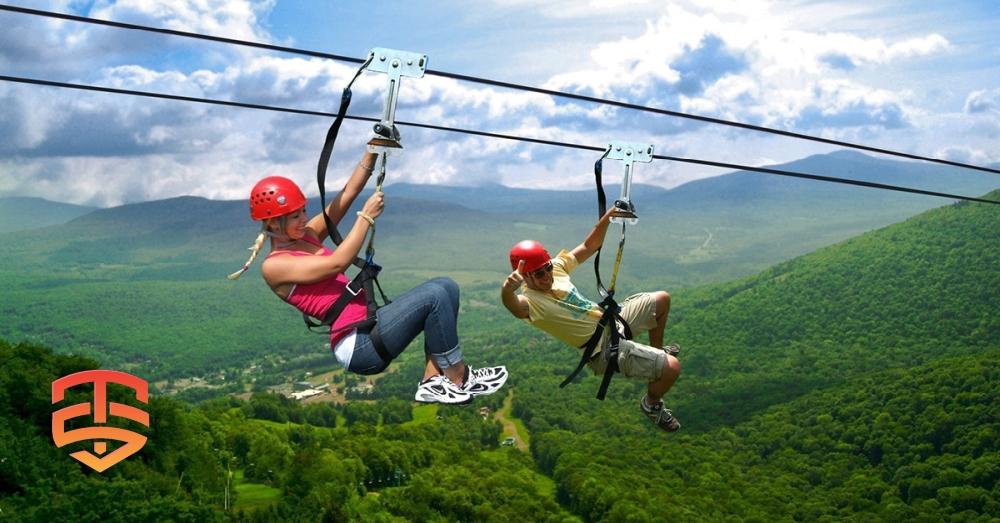
MISTAKE #9: IMPROPERLY ENGINEERING AND INSTALLING THE LINE AND PLATFORMS
A design and installation issue is improperly engineering your zip line and platforms, which will have a substantial influence on return on investment, profitability, and throughput.
Many zip lines aren’t planned or built with high throughput in mind from the start. Instead, most are built for cost-effectiveness up front, which is often at conflict with optimal performance. Regardless of wind or weather, an ideal zip line has a positive angle from start to end, allowing riders of all shapes and sizes to arrive comfortably at the landing platform every time.
It’s critical to get the right parts for your zip line installation. This installation makes use of a reduction rope that is thick, heavy, and prone to becoming wet. This would not be the best rope to use with your braking system, as it could cause braking issues.
Every zip line has a belly or sag. Even under ideal conditions, it is hard to eliminate all sag due to the weight of the zip line. Make every attempt to get rid of as much belly as possible to reduce the amount of uphill travel. When it comes to uphill arrival, there will always be a compromise: if the zip line is designed so that the lightest rider arrives at the landing platform regularly, the heaviest rider will arrive with excessive velocity. In contrast, if the zip line is set so that the heaviest rider reaches the platform at a safe speed, a lighter rider will not reach the platform and will require recuperation. When you add a head or tail wind to the mix, you’ll end up with a lot of downtime and unhappy consumers.
Solution:
Increasing zip line tension is the solution to an inadequately engineered zip line. Having adequate tension on your zip lines will result in more consistent arrival times, fewer recoveries, and higher client satisfaction. With higher throughput and satisfied customers willing to return, the investment to remedy the line tension issue has the potential to quickly pay for itself.
Before starting this project, speak with your builder or an engineer. Because high-tension lines can only be built with greater diameter cable, which necessitates more substantial support structures, you’ll need to plan ahead of time for engineering and construction.
Separating your platform from the terminal pole is another basic design idea that is often missed. While this may appear counterintuitive, it allows you to build the platform as long as you need to ensure that all riders reach it. The terminal pole does not have to be permanently linked to the landing platform.
CONCLUSION
Most zip line operations are hampered by a variety of hidden variables that reduce their efficiency and profitability. Many of these problems put your participants in danger of serious injury. While you were probably unaware that many of these issues exist, you’ve now taken the first step by learning about the issues and their remedies.
We hope you would consider using this knowledge to improve your own zip line for the sake of the industry and to generate happy zip line riders. We strongly advise you to consult with your builder or engineer to see what modifications you can make to your zip line operation to boost its success.
CONTACT US
Thrill Syndicate applies innovative technologies to bring new adventure recreation equipment to the climbing, zip line, adventure, and amusement industries. Our products strive to reduce the risk involved in adventure activities, while increasing your throughput and enhancing your customer experience.
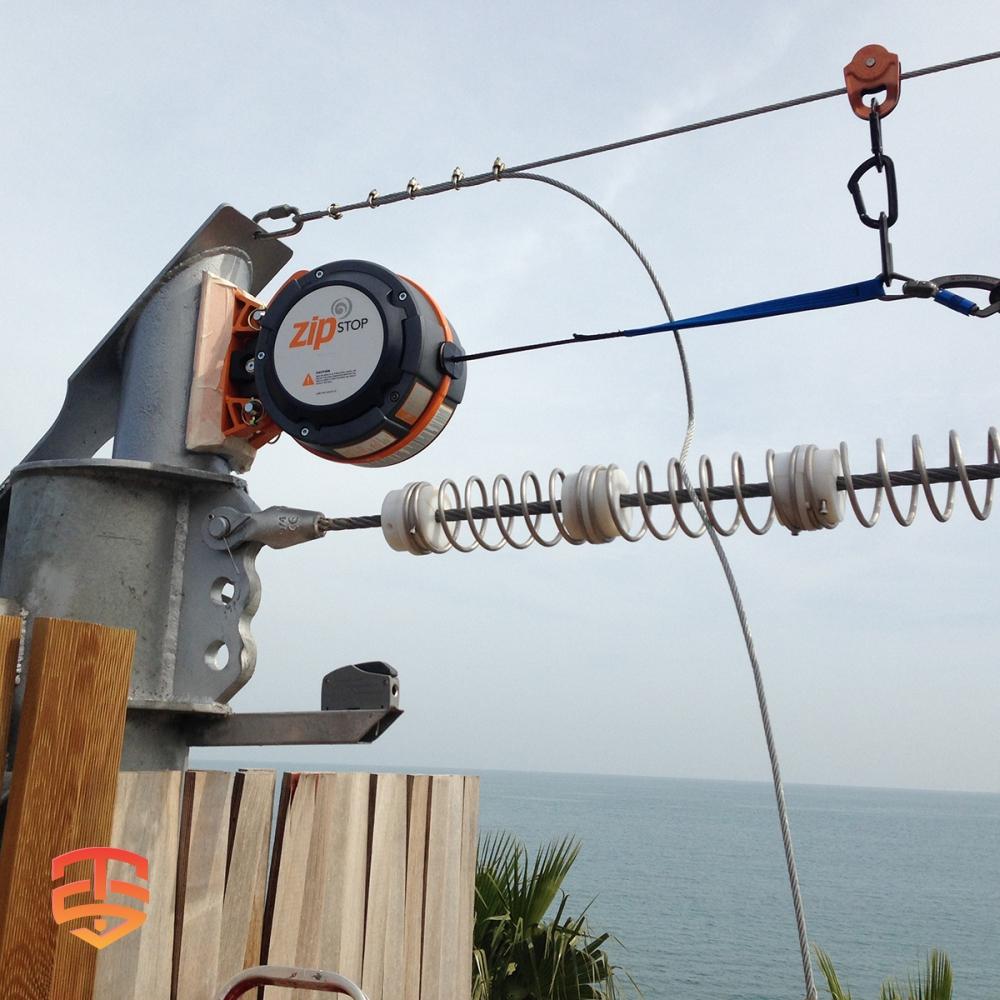
Zipline Safety Solutions
We deliver a complete professional Zipline system, from our Self-braking Magnetic Zipline Trolley to a safe Zipline Spring Brake.
We offer a full family of zip line brakes that increase throughput with a hands-free braking experience for zip line riders and operators, and a full ecosystem of zip line products to outfit the best zip line builds in the world. We use advanced technology to engineer and manufacture innovative adventure equipment for the outdoor, amusement and recreation industries.
Beyond the Basics: Unveiling Zipline Technology with Expert Analysis
Intrigued by the potential of Zipline technology? You’ve come to the right place! This article provides a solid foundation. But if you’re eager to delve deeper and gain insights from industry experts, keep reading…
- Zip Line Design: Components for a Complete System
- Considering operating and investing in a zipline?
- 9 Zipline Mistakes You Don’t Know You’re Making
- Magnetic Zipline Braking: A Revolutionary Way to Ensure Safe Rides
- Pros and Cons of Different Zip Line Brakes
- Expert Tips for Zip Line Brake Installations
- White Paper on Zipline Emergency Arrest Devices (EAD)
- The Importance of Optimizing Zip Line Design for Rider Speed
- Does your zip line need an emergency arrest device?
- The Magnetic Self-braking Zipline pulley
- Zipline Braking and landing considerations
- Why Zip Line Trolley Bearings Matter
- Whitepaper: Zipline Braking Dynamics
- Zip Line Installation: Give them the Best Ride
- How to startup a Successful Zip Line Business
-
 zipSTOP IR Zipline Brake | 24 – 60 kph€ 5.649,00 – € 5.799,00 Ex VAT
zipSTOP IR Zipline Brake | 24 – 60 kph€ 5.649,00 – € 5.799,00 Ex VAT -
 zipSTOP SPEED Zipline Brake | 50 – 72 kph€ 6.099,00 – € 6.349,00 Ex VAT
zipSTOP SPEED Zipline Brake | 50 – 72 kph€ 6.099,00 – € 6.349,00 Ex VAT -
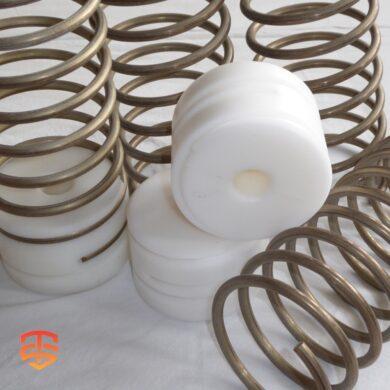 Spring Brake System | Primary & EAD zipline brake€ 80,00 Ex VAT
Spring Brake System | Primary & EAD zipline brake€ 80,00 Ex VAT







